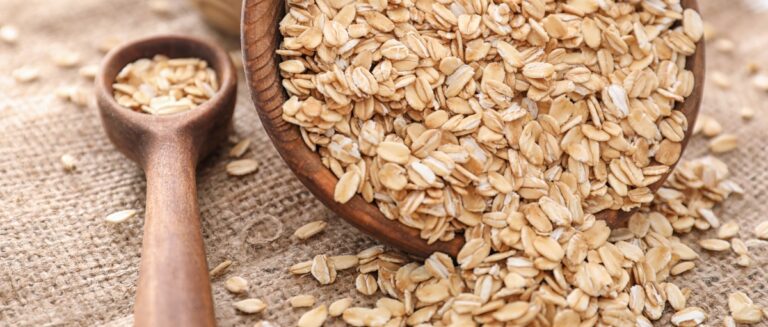Are you over 50 and finding it difficult to lose weight? You’re not alone. The overwhelming majority of American adults are overweight or obese, and those aged 40-59 are at the highest risk. And to top that, obesity rates have tripled in the last 60 years.
The numbers are against those wishing for trim golden years.
As we age, our bodies undergo changes that can make weight loss more challenging. Hormonal shifts, muscle loss, and a slower metabolism contribute to the dreaded “middle-age spread.” But with the right approach, you can overcome these obstacles and achieve healthy, sustainable weight loss.
Let’s discuss the specific challenges of losing weight after the age of 50 and provide practical, evidence-based strategies to help you lose those extra pounds. We will cover optimizing your diet and exercise routine, making key lifestyle changes, and getting the right support.
How to Lose Weight After 50
Losing weight after 50 is possible, but it will require intentional effort. Incorporate weight lifting or resistance exercises 2-3 times a week to prioritize strength training, prevent muscle loss, and increase metabolism. Adjust your diet to focus on nutrient-dense, low-calorie foods, boost protein intake, and reduce processed foods and sugars.
Increasing physical activity is essential. Aim for regular cardio exercises and include daily movements like walking. Quality sleep and stress management are also crucial. Strive for 7-9 hours of sleep per night and practice mindfulness or yoga to reduce stress. Monitoring progress and seeking advice from healthcare professionals can provide additional support. Consistency and patience are essential for sustainable results and improved health.
The Unique Challenges of Losing Weight After 50
Losing weight can be tough at any age, but for those over 50, the challenges are even greater. Here’s a closer look at some of the factors that can make weight loss more difficult as we age:
Hormonal Changes
For women, menopause marks a significant shift in hormone levels. As estrogen declines, the body tends to store more fat, especially around the midsection. Men, too, experience hormonal changes as they age. Andropause, or the gradual decline in testosterone, can lead to muscle loss and increased body fat.
Muscle Loss and Slower Metabolism
After the age of 30, you start to lose about 3% to 5% of muscle mass per decade. This process, known as sarcopenia, speeds up after the age of 50. Since muscle is more metabolically active than fat, this loss can reduce our resting metabolic rate (RMR), making it more difficult to burn calories and lose weight.
Other Factors
Several other factors can contribute to weight gain and make weight loss more challenging after 50:
- Stress: Chronic stress can lead to overeating and weight gain, and many older adults face stressors like retirement, caring for aging parents, or health concerns.
- Sleep: As we age, we may experience changes in our sleep patterns, such as insomnia or waking frequently at night. Poor sleep has been linked to weight gain and difficulty losing weight.
- Medications: Some common medications prescribed for older adults, such as antidepressants or beta blockers, can cause weight gain as a side effect.
Understanding these unique challenges is the first step in developing a weight loss plan that works for you. The next section will explore how a balanced, whole-food diet can help you overcome these obstacles and achieve your weight loss goals.
The Importance of a Balanced, Whole-Foods Diet
When it comes to losing weight after 50, what you eat is just as important as how much you eat. Focusing on nutrient-dense, whole foods can help you feel satisfied while providing your body with the fuel it needs to thrive.
Fill Your Plate with Nutrient-Dense Foods
The foundation of a healthy diet for weight loss should be:
- Fruits and vegetables: Aim for a variety of colorful produce, which is packed with vitamins, minerals, and fiber to keep you feeling full.
- Lean proteins: Choose sources like chicken, fish, legumes, and tofu to help maintain muscle mass and satisfy you.
- Whole grains: For sustained energy and fiber, opt for minimally processed grains like quinoa and wild rice.
- Healthy fats: In moderation, include sources like avocados, nuts, seeds, olive oil, and quality red meats for heart health and satiety.
At the same time, try to limit processed foods, sugary snacks and beverages, and excessive saturated and trans fats, which can contribute to weight gain and health problems.
Power Up with Protein
Getting enough protein is especially important for older adults looking to lose weight. Research suggests that adults over 50 may need slightly more protein than younger individuals to maintain muscle mass and support weight loss.
Aim for about 0.5-0.8 grams of protein per pound of body weight, depending on your activity level. For example, a 150-pound person would need 75-120 grams of protein daily. Good sources include eggs, lean meats, fish, meat, legumes, nuts, and seeds.
Practice Mindful Eating
Mindful eating is another powerful tool for weight loss at any age. This practice involves paying attention to your hunger and fullness cues, eating slowly and without distractions, and savoring your food.
Try these tips to eat more mindfully:
- Eat at the table instead of in front of the TV or computer
- Put your fork down between bites
- Take a moment to appreciate the colors, smells, and flavors of your food
- Check-in with your hunger and fullness levels throughout the meal
By focusing on whole foods, prioritizing protein, and practicing mindful eating, you can create a sustainable, satisfying diet that supports your weight loss goals. Next, we’ll explore the role of exercise and strength training in losing weight after 50.
The Role of Exercise and Strength Training
While diet is crucial for weight loss, exercise is equally important—especially for older adults. Regular physical activity helps burn calories, maintains muscle mass, boosts metabolism, and improves overall health.
Embrace Cardio for Overall Health
Cardiovascular exercise, or cardio, is any activity that gets your heart rate up and improves your endurance. Aim for at least 150 minutes of moderate-intensity cardio per week, such as:
- Brisk walking
- Swimming
- Cycling
- Dancing
If you’re short on time, you can also try high-intensity interval training (HIIT), which alternates short bursts of intense activity with rest periods. HIIT has been shown to boost metabolism and promote fat loss, even in older adults.
If these cardio activities don’t seem like your cup of tea, consider going for long walks. It is well-documented that walking keeps you in a fat-burning heart rate zone, targets fat loss in problem areas, can assist in maintaining healthy blood sugar levels, is great for mental health, and guarantees that you’ll be getting fresh air and sunlight.
Build Muscle with Strength Training
Strength training, also known as resistance training, is crucial for maintaining muscle mass and boosting metabolism as we age. Aim to include strength training exercises at least twice weekly, targeting all major muscle groups.
Some effective strength training exercises for older adults include:
- Bodyweight exercises like squats, lunges, and push-ups
- Resistance band exercises
- Dumbbell or kettlebell workouts
Remember to slowly and gradually increase the weight or resistance as you build strength and confidence.
Stay Active Throughout the Day
In addition to structured exercise, staying active throughout the day is important. Non-exercise activity thermogenesis (NEAT) refers to the calories burned through daily activities like housework, gardening, and even fidgeting.
To increase your NEAT, try:
- Taking the stairs instead of the elevator
- Parking farther away from your destination
- Doing yard work or gardening
- Standing or pacing while talking on the phone
By incorporating a mix of cardio, strength training, and daily activity, you can boost your metabolism, maintain muscle mass, and support your weight loss goals.
Lifestyle Changes and Mindset Shifts
Losing weight after 50 is about more than just diet and exercise — it also requires making sustainable lifestyle changes and adopting a positive mindset.
Focus on Sustainable Changes
Fad diets and extreme exercise routines may promise quick results, but they’re often difficult to maintain long-term. Instead, focus on making gradual, sustainable changes to your eating and activity habits.
Some examples of sustainable lifestyle changes include:
- Replacing sugary drinks with water or unsweetened tea
- Adding an extra serving of vegetables to each meal
- Going for a daily walk with a friend or family member
- Practicing stress-reduction techniques like meditation or deep breathing
Address Emotional Eating
Many people turn to food for comfort or stress relief, which can sabotage weight loss efforts. If you find yourself eating in response to emotions rather than hunger, try:
- Identifying your emotional eating triggers
- Finding alternative coping mechanisms, like talking to a friend or engaging in a hobby
- Practicing mindfulness to become more aware of your eating habits and emotions
Prioritize Sleep
Getting enough quality sleep is crucial for weight loss and overall health. Poor sleep has been linked to increased appetite, cravings for high-calorie foods, and reduced motivation to exercise.
To improve your sleep, try:
- Sticking to a consistent sleep schedule
- Creating a relaxing bedtime routine
- Avoiding electronic devices before bed
- Keeping your bedroom cool, dark, and quiet
By making sustainable lifestyle changes, addressing emotional eating, and prioritizing sleep, you can create a supportive environment for weight loss and overall well-being.
Getting Support and Addressing Underlying Issues
Losing weight after 50 can be challenging, but you don’t have to go it alone. Seeking professional support and addressing underlying health issues can significantly improve your success.
Work with a Dietitian or Health Coach
A registered dietitian or certified health coach can provide personalized nutrition advice tailored to your needs and goals. They can help you:
- Create a balanced meal plan that fits your lifestyle and preferences
- Identify and overcome obstacles to healthy eating
- Develop strategies for dining out and navigating social situations
Find an Accountability Partner
Having someone to share your journey with can provide motivation, encouragement, and accountability. Consider:
- Joining a support group for people with similar weight loss goals
- Enlisting a friend or family member to be your workout buddy
- Hiring a personal trainer for guidance and support
Address Underlying Health Issues
Sometimes, underlying health issues can make weight loss more challenging. Talk to your healthcare provider if you suspect a medical condition or medication may affect your weight. They can help you:
- Identify and manage conditions like hypothyroidism or polycystic ovary syndrome (PCOS)
- Adjust medications that may contribute to weight gain
- Develop a personalized treatment plan to support your weight loss goals
By seeking professional support, finding an accountability partner, and addressing underlying health issues, you can set yourself up for long-term weight loss success.
Your Journey to a Healthier You
Losing weight after 50 may come with its own challenges, but armed with the right knowledge and strategies, you can achieve your goals and improve your overall health and well-being.
Remember, sustainable weight loss is a journey, not a destination.
By nourishing your body with whole foods, staying active, making lifestyle changes, and seeking support, you can create lasting habits that will serve you well for years.
So take that first step today—whether it’s trying a new healthy recipe, going for a walk around the block, or scheduling an appointment with a registered dietitian. Every small change counts and brings you closer to a healthier, happier you.
Embrace this new chapter in your life and celebrate the strength, resilience, and wisdom that come with age. You have the power to transform your health and your life—start today and never look back.
Sources
National Institute of Diabetes and Digestive and Kidney Diseases. (n.d.). Overweight and obesity statistics. https://www.niddk.nih.gov/health-information/health-statistics/overweight-obesity
Lou, N. (2020). Obesity and COVID-19 risk: What we know now. MedPage Today. https://www.medpagetoday.com/primarycare/obesity/90142
USA Facts. (2022). Obesity rate nearly triples in the United States over the last 50 years. https://usafacts.org/articles/obesity-rate-nearly-triples-united-states-over-last-50-years/
NHS. (n.d.). Male menopause: Symptoms, causes, and treatment. https://www.nhs.uk/conditions/male-menopause/
Harvard Health Publishing. (2023). Preserve your muscle mass as you age. https://www.health.harvard.edu/staying-healthy/preserve-your-muscle-mass
American College of Sports Medicine. (2020). Protein intake for optimal muscle maintenance. https://www.acsm.org/docs/default-source/files-for-resource-library/protein-intake-for-optimal-muscle-maintenance.pdf
American Heart Association. (2022). Target heart rates chart. https://www.heart.org/en/healthy-living/fitness/fitness-basics/target-heart-rates
Dove Medical Press. (2020). Effect of aerobic exercise on epicardial adipose tissue. Diabetes, Metabolic Syndrome and Obesity, 13, 217-223. https://www.dovepress.com/effect-of-aerobic-exercise-on-echocardiographic-epicardial-adipose-tis-peer-reviewed-fulltext-article-DMSO
Aoyagi, Y., et al. (2013). The effects of interval walking on cardiovascular health. Diabetes Care, 36(2), 228-234. https://diabetesjournals.org/care/article/36/2/228/38194/The-Effects-of-Free-Living-Interval-Walking
MedShadow Foundation. (2023).Benefits of walking: Improve mental health. https://medshadow.org/benefits-of-walking-improve-mental-health/











